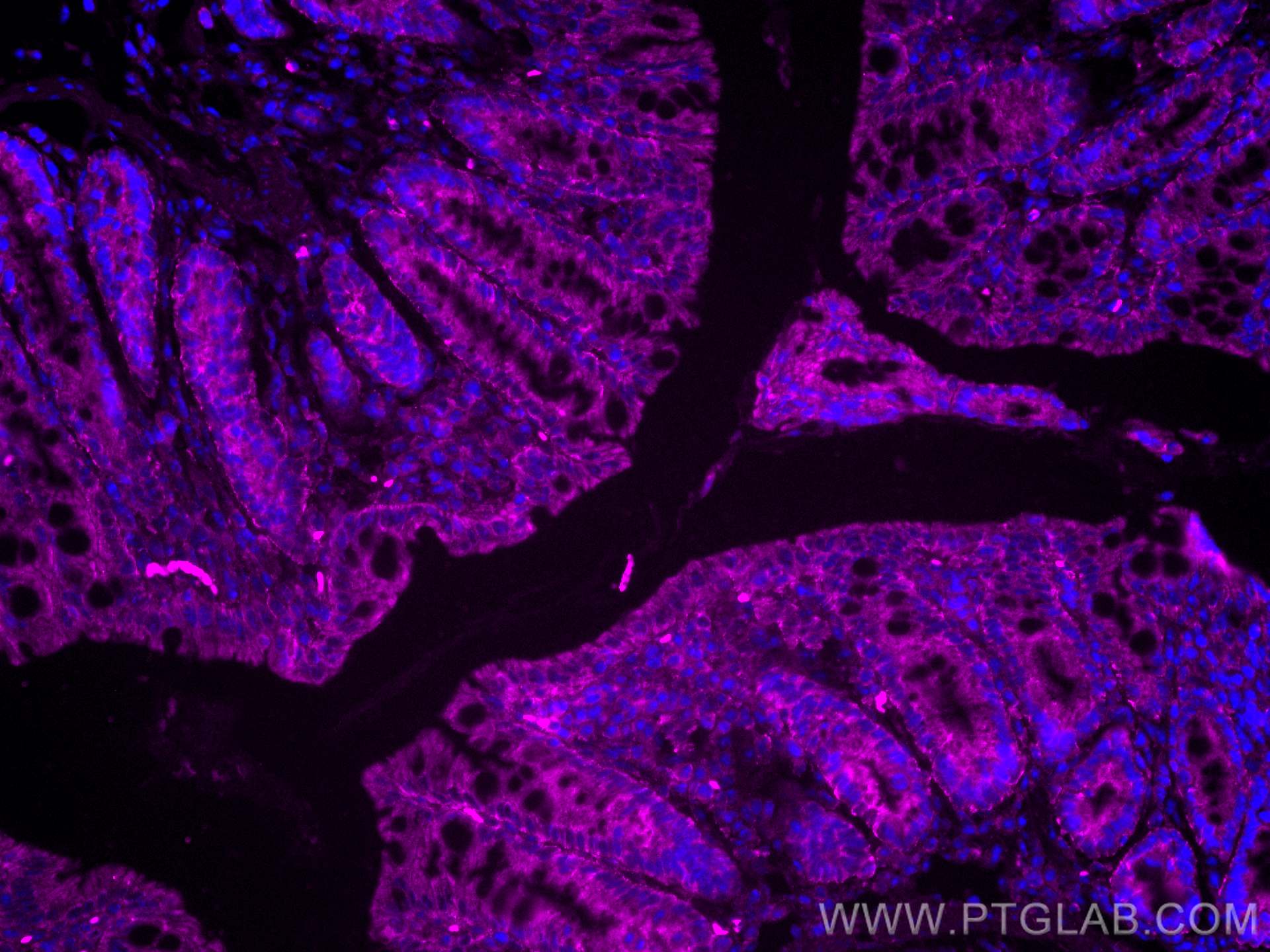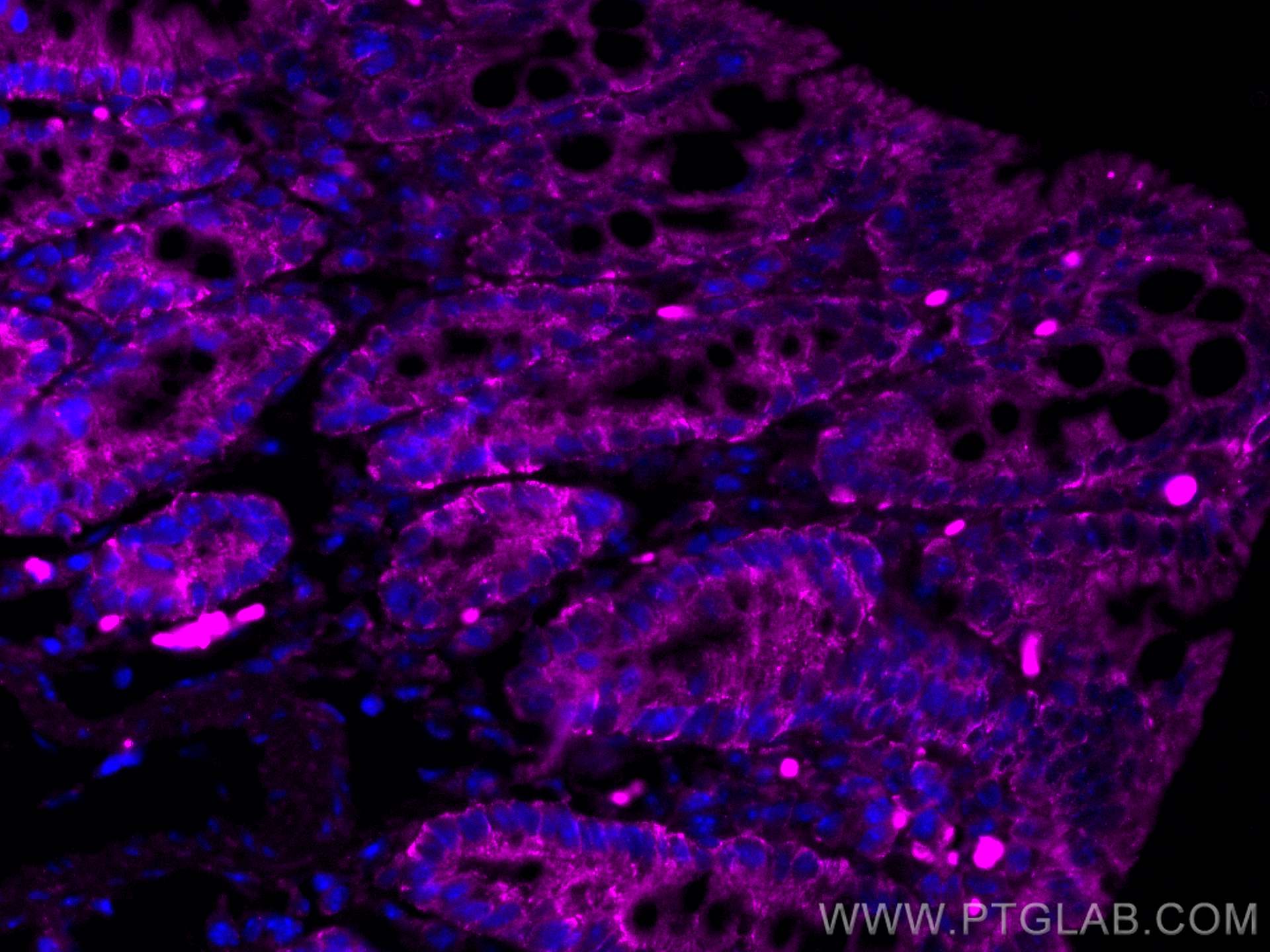Tested Applications
| Positive IF-P detected in | mouse colon tissue |
Recommended dilution
| Application | Dilution |
|---|---|
| Immunofluorescence (IF)-P | IF-P : 1:50-1:500 |
| It is recommended that this reagent should be titrated in each testing system to obtain optimal results. | |
| Sample-dependent, Check data in validation data gallery. | |
Product Information
CL647-67691 targets FABP2 in IF-P applications and shows reactivity with Human, mouse, rat, rabbit, pig samples.
| Tested Reactivity | Human, mouse, rat, rabbit, pig |
| Host / Isotype | Mouse / IgG1 |
| Class | Monoclonal |
| Type | Antibody |
| Immunogen | FABP2 fusion protein Ag17620 Predict reactive species |
| Full Name | fatty acid binding protein 2, intestinal |
| Calculated Molecular Weight | 132 aa, 15 kDa |
| Observed Molecular Weight | 15 kDa |
| GenBank Accession Number | BC069617 |
| Gene Symbol | FABP2 |
| Gene ID (NCBI) | 2169 |
| RRID | AB_2920299 |
| Conjugate | CoraLite® Plus 647 Fluorescent Dye |
| Excitation/Emission Maxima Wavelengths | 654 nm / 674 nm |
| Form | Liquid |
| Purification Method | Protein G purification |
| UNIPROT ID | P12104 |
| Storage Buffer | PBS with 50% glycerol, 0.05% Proclin300, 0.5% BSA, pH 7.3. |
| Storage Conditions | Store at -20°C. Avoid exposure to light. Stable for one year after shipment. Aliquoting is unnecessary for -20oC storage. |
Background Information
FABP2, also known as the intestinal fatty acid binding protein (I-FABP), is expressed in the absorptive intestinal villous cells. It is mainly involved in intracellular transport and intestinal absorption of lipids. FABP2 has been considered a marker of mucosal injury and ischemia and serum I-FABP level is used as a tissue damage indicator. In addition, it is a marker of differentiated intestinal epithelial cells.
Protocols
| Product Specific Protocols | |
|---|---|
| IF protocol for CL Plus 647 FABP2 antibody CL647-67691 | Download protocol |
| Standard Protocols | |
|---|---|
| Click here to view our Standard Protocols |





